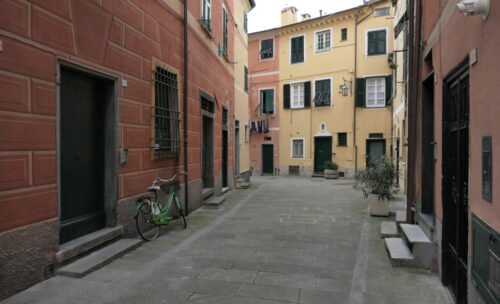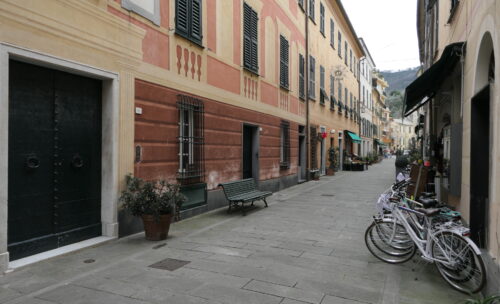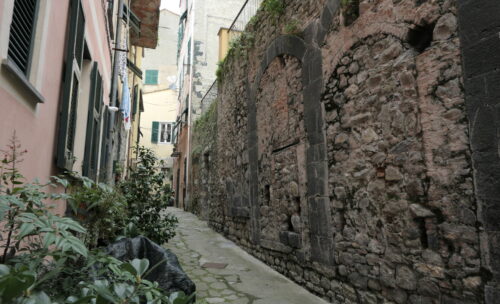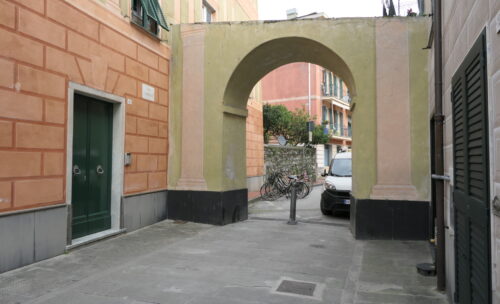In the immediate vicinity of the Lodge is the starting point of the current Via Guani, upon which Via dei Monti was graft and stretched up to Porta San Cristoforo, which opened up on the curtain wall upstream from the medieval village. Towards the sea, the walls stopped and the defensive function is covered by the ranks of houses. On the way we can still see the medieval houses that had workshops or small warehouses on the ground floor, as indicated by the archways of local serpentinite that remind us of how this road was an important pathway for the transit of goods.
Beyond Porta San Cristoforo, facing Via Garibaldi, a string course houses nine hanging arches each framing a burlesque and caricatural frescoed bust. These depictions suggest that this building could have been an inn that, given its vicinity to the city entrance, likely functioned as resting place for weary travellers.
Starting from the 14th century, outside the city walls Borgo Nuovo was born as a consequence of the growing need of housing caused by Genoa’s increased interest in Levanto’s development. This new core grows in the plain of Ghiararo Creek, taking on the nickname Borgo dello Stagno (stagno means pond) due to the numerous floods. In this urban structure, the path of Via dei Monti and Via Garibaldi were the same, the former continuing towards the plain of San Rocco and finally reaching the open fields by going through Porta dello Stagno, also known as Porta San Martino due to the homonymous oratory near it.













